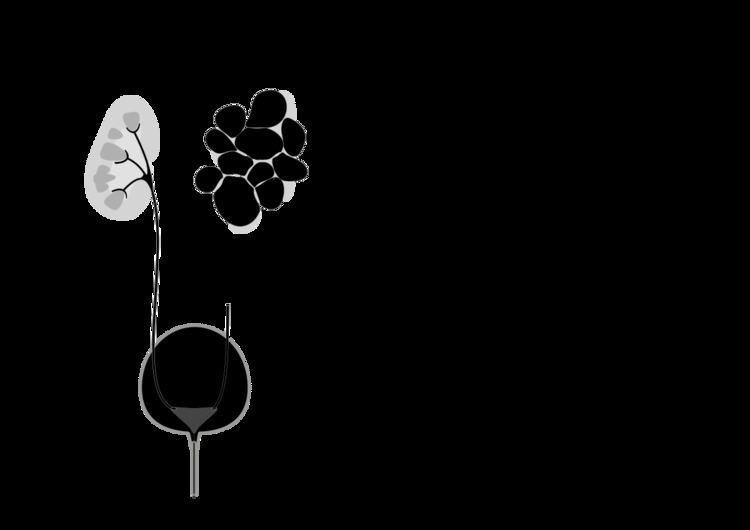Specialty medical genetics ICD-9-CM 753.1 MeSH D052177 | ICD-10 Q61 eMedicine med/3189 | |
 | ||
Cystic kidney disease refers to a wide range of hereditary, developmental, and acquired conditions. With the inclusion of neoplasms with cystic changes, over 40 classifications and subtypes have been identified. Depending on the disease classification, the presentation of disease may be from birth, or much later into adult life. Cystic disease may involve one or both kidneys and may or may not occur in the presence of other anomalies. A higher incidence of cystic kidney disease is found in the male population and prevalence increases with age. Renal cysts have been reported in more than 50% of patients over the age of 50. Typically, cysts grow up to 2.88 mm annually and cause related pain and/or hemorrhage.
Of the cystic kidney diseases, the most common is Polycystic kidney disease; having two prevalent sub-types: autosomal recessive and autosomal dominant polycystic kidney disease. Autosomal Recessive Polycystic Kidney Disease (ARPKD) is primarily diagnosed in infants and young children. Autosomal dominant polycystic kidney disease (ADPKD) is most often diagnosed in adulthood.
Another example of cystic kidney disease is Medullary sponge kidney.
Antenatal scans
Many forms of cystic kidney disease can be detected in children prior to birth. Abnormalities which only affect one kidney are unlikely to cause a problem with the healthy arrival of a baby. Abnormalities which affect both kidneys can have an effect on the baby's amniotic fluid volume which can in turn lead to problems with lung development. Some forms of obstruction can be very hard to differentiate from cystic renal disease on early scans.
